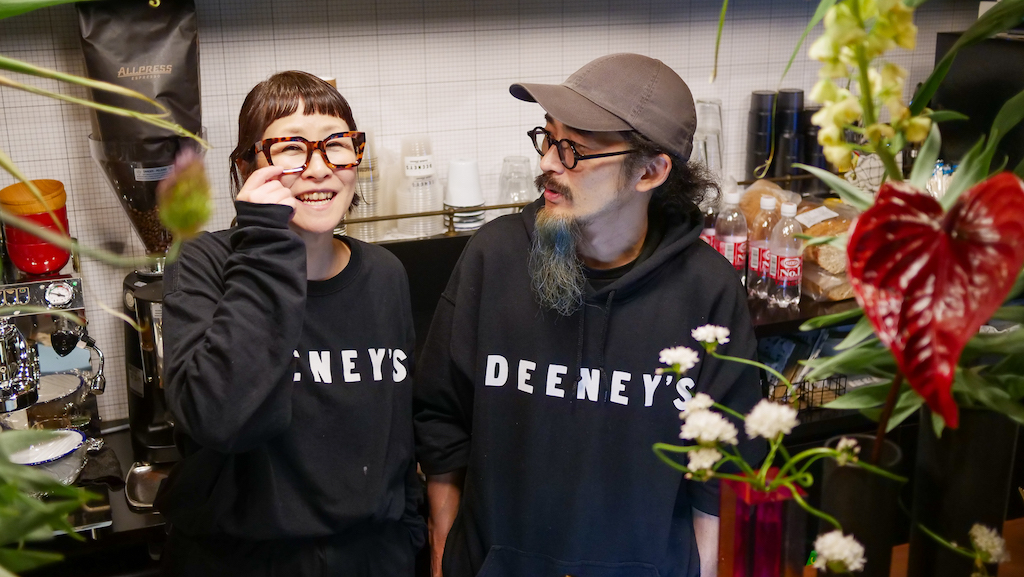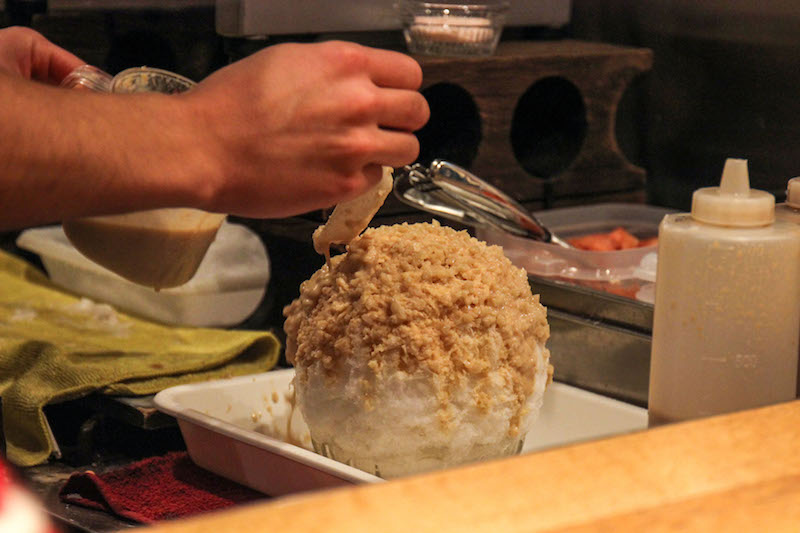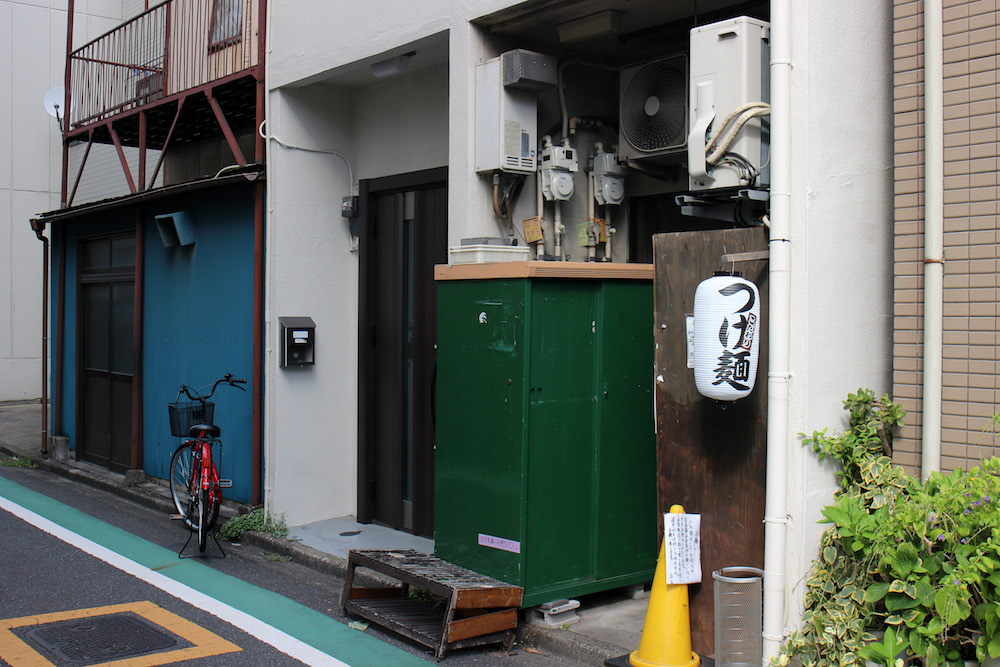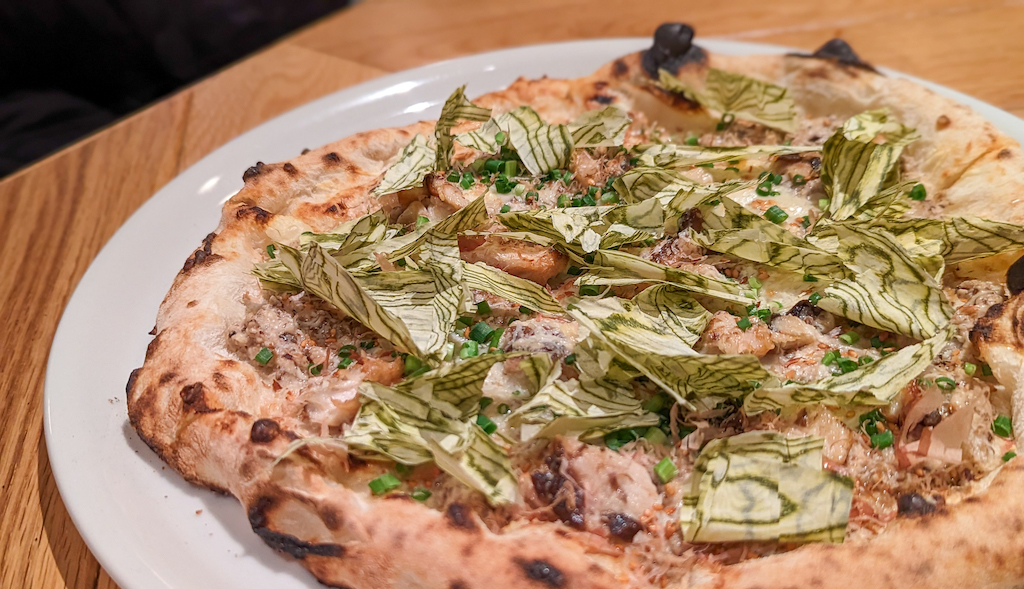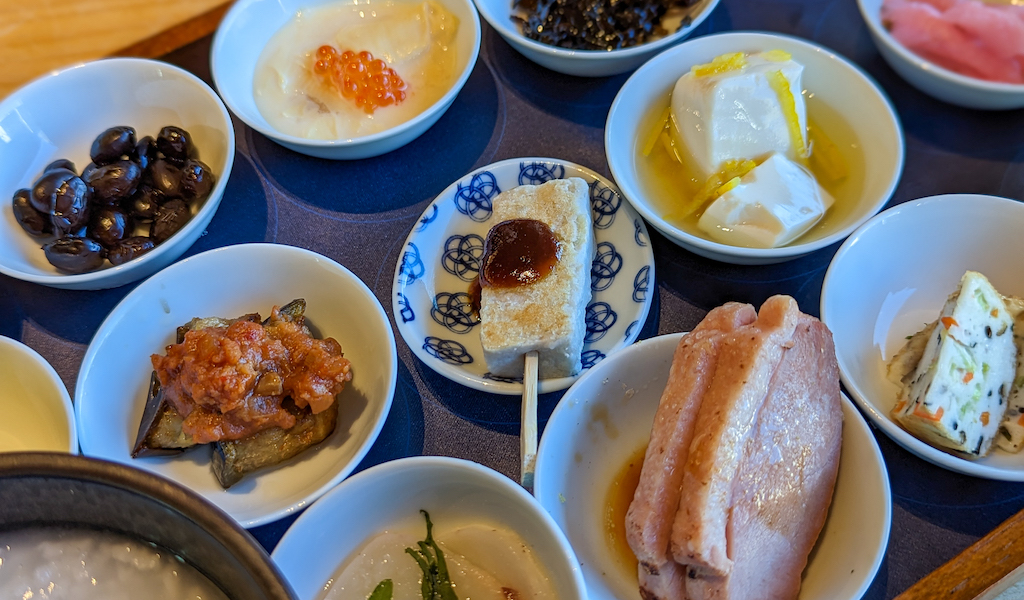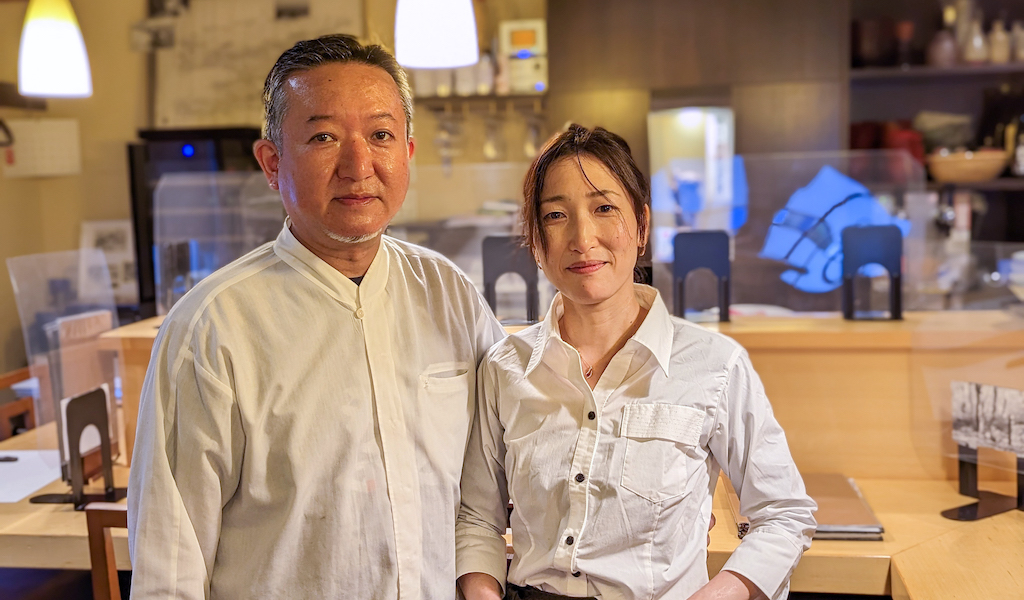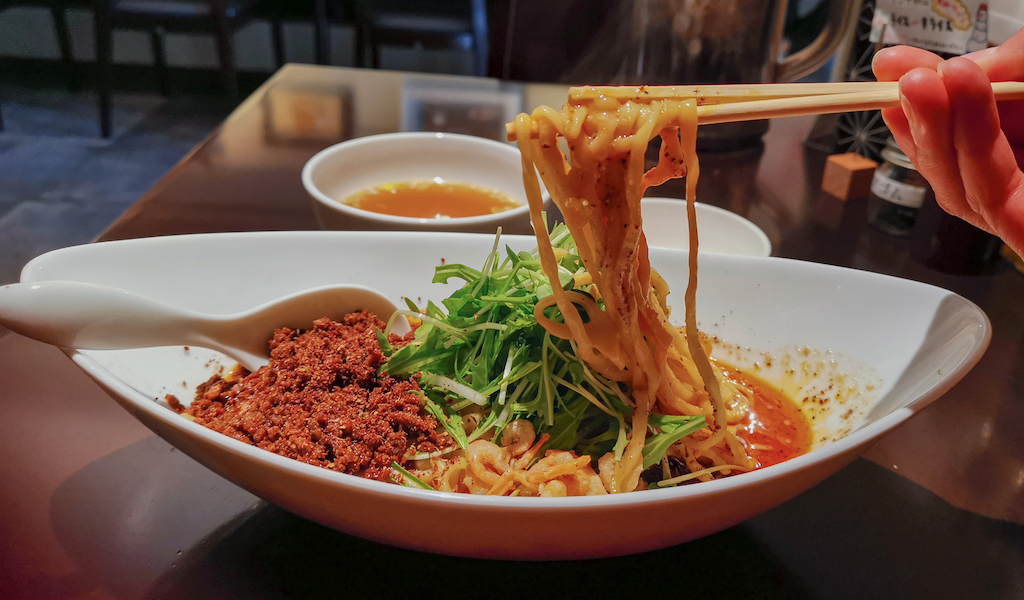We can't find the internet
Attempting to reconnect
Something went wrong!
Hang in there while we get back on track
Search results for "Phoebe Amoroso"
Tokyo
Deeney’s Tokyo: Haggis Outpost
Stumbling upon a haggis toastie store in the middle of Tokyo sounds like a half-remembered dream where nothing quite makes sense. It was the minimalist black store front with white type that had initially drawn us to it. It looked like a store straight out of London, and certainly not like a café that one would expect to find next to Japan’s Olympic stadium. Its menu dripped with promise: toasties (toasted sandwiches) stuffed with glorious cheese. And real bread, granary bread, something we’d never spied before in Japan. Loaves of it were stacked in rows above the counter, and a griddle sat to one side, where butter-slathered slices, jammed packed with fillings, were being flattened into crispy parcels.
Read moreTokyo
Kooriya Peace: Shaved Ice Mountain
It’s 9 o’clock in the morning and the narrow streets that fringe Inokashira Park are largely empty. This part of Kichijoji, a lively neighborhood in west Tokyo, has yet to wake up. Storefront shutters are yet to be lifted; staff inside cafés can be glimpsed preparing for the day. Yet, on one corner, a couple of girls duck into an enclosed alleyway and reappear five minutes later. Next, a solo lady strides inside, emerging after a minute or two. People drift in and out, marking an unusual pattern of activity. This is the entrance to Kooriya Peace, a renowned kakigori (shaved ice) store that’s so popular customers secure their dessert hours in advance – although for early birds it might become their breakfast.
Read moreTokyo
Ura Sablon: Noodle Chalet
Ramen joints are often easily recognizable, either by large windows illuminating slurping customers, a vending machine dispensing meal tickets at the doorway, or the brightly lit signs; usually it’s some combination of the three. When it comes to Ura Sablon, however, one might easily pass it by. The narrow entrance is tucked away between a storage locker and an air conditioning unit; a small notice, illegible unless up close, is attached to a traffic cone; and the paper lantern reading “tsukemen” – a kind of dipping noodles – could easily have ended up there by chance.
Read moreTokyo
Pizza Marumo: The Dough Whisperer
Every day, Yuki Motokura records the temperature and the humidity, and checks in on his pizza dough. He adjusts the flour, water and salt in minute increments, and logs the results with precision. “Even if the data is the same, it might not come out the same,” Motokura says. “Pizza is just that difficult.” While there’s no failsafe trick, he says he’s developed a kind of sense for how the dough might behave during his years of experience. “I lift the lid on the fermenting dough and I have a kind of discussion with it,” he explains. “‘What shall we do today?’”
Read moreTokyo
Cafe Tsumugi: Buddhist-Inspired Breakfast
Those arriving at Tsukiji Station on an early morning food hunt are most likely in pursuit of some breakfast sushi. Although Japan’s world-famous Tsukiji fish market relocated to Toyosu in October 2018, the ramshackle outer market remained, with its eclectic mix of household goods, tea and dried goods, and seafood donburi shops. Those in the know, however, might head for a different and very unusual breakfast experience in the area – one that has its origins in traditional vegan Buddhist cuisine. The most striking landmark upon exiting Tsukiji Station is not the market entrance, but the imposing Tsukiji Hongwanji temple. Set back from the road, this grey stone behemoth is modeled after ancient Buddhist architecture found in India and other Asian countries, with an arched roof rounded into a ringed point known as a sorin.
Read moreTokyo
Nanohana: Cuisine from Sado Island
Nanohana could almost be mistaken for someone’s house if it weren’t for a small lectern, propping open an enthusiastically-scrawled menu. The restaurant is small and discreet, tucked down a side street, where its sandy-colored walls and wooden door with glass panels blends into a charming old neighborhood in Ueno in the east of Tokyo. We pull open that door to reveal a cosy, retro interior, a few dark wood tables, green lamps on the wall and an S-shaped counter behind which lies the kitchen. Most striking, however, is the paraphernalia from Sado Island – maps, old photos and bottles of sake line the walls. It’s clear we have stumbled into a home-away-from-home, a labor of love created by Nanohama’s owners, couple Tadahiro and Nami Ishizuka.
Read moreTokyo
Sichuan Tantanmen Aun: Noodles That Turn Up the Heat
In Japan, people opting for new year noodles will most likely pick soba buckwheat noodles. Often eaten on New Year’s Eve as “toshikoshi soba” (literally, “year-crossing noodles”), which are served in a light dashi broth, they symbolize good luck, longevity, and breaking off the hardship of the previous year. During the chilly days of January, however, we find ourselves craving a different kind of noodle to start the year: tantanmen. Punchy, oily, and spicy wheat noodles topped with minced pork, this gloriously fiery dish might not give us a long life, but it’s something we’re planning to eat life-long.
Read more